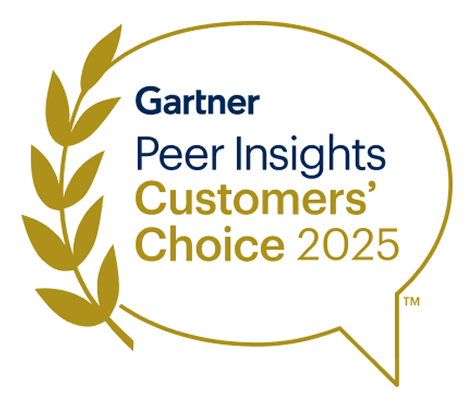How to Scale DSAR Compliance (Without Breaking Your Team)
Privacy regulations such as GDPR (EU), CCPA/CPRA (California), and others are not just about legal checkboxes, they’re about building trust. In today’s data-driven world, customers expect organizations to be transparent about how their personal information is collected, used, and protected. When companies take privacy seriously, they demonstrate respect for their users, which in turn fosters loyalty and long-term engagement.
But among the many privacy requirements, Data Subject Access Requests (DSARs) can be the most complex to support. DSARs give individuals the right to request access to the personal data that an organization holds about them—often with a firm deadline of just 30 days to respond. For large enterprises with data scattered across multiple systems, both in the cloud and on-premises, even a single request can trigger a chaotic search across different platforms, manual reviews and legal oversight—it quickly becomes a race against the clock, with compliance, trust, and reputation on the line.
Key Challenges in Responding to DSARs
Data Discovery & Inventory
For large organizations, pinpointing where personal data resides across a diverse ecosystem of information systems, including databases, SaaS applications, data lakes, and legacy environments, is a complex challenge. The presence of fragmented IT infrastructure and third-party platforms often leads to limited visibility, which not only slows down the DSAR response process but also increases the likelihood of missing or overlooking critical personal data.
Linking Identities Across Systems
A single individual may appear in multiple systems under different identifiers, especially if systems have been acquired or integrated over time. Accurately correlating these identities to compile a complete DSAR response requires sophisticated identity resolution and often manual effort.
Unstructured Data Handling
Unlike structured databases, where data is organized into labeled fields and can be efficiently queried, unstructured data (like PDFs, documents, and logs) is free-form and lacks consistent formatting. This makes it much harder to search, classify, or extract relevant personal information.
Response Timeliness
Regulatory deadlines force organizations to respond quickly, even when data must be gathered from multiple sources and reviewed by legal teams. Manual processes can lead to delays, risking non-compliance and fines.
Volume & Scalability
While most organizations can handle an occasional DSAR manually, spikes in request volume — driven by events like regulatory campaigns or publicized incidents — can overwhelm privacy and legal teams. Without scalable automation, organizations face mounting operational costs, missed deadlines, and an increased risk of inconsistent or incomplete responses.
The Role of Data Security Platforms in DSAR Automation
Sentra is a modern data security platform dedicated to helping organizations gain complete visibility and control over their sensitive data. By continuously scanning and classifying data across all environments (including cloud, SaaS, and on-premises systems) Sentra maintains an always up-to-date data map, giving organizations a clear understanding of where sensitive data resides, how it flows, and who has access to it. This data map forms the foundation for efficient DSAR automation, enabling Sentra’s DSAR module to search for user identifiers only in locations where relevant data actually exists - ensuring high accuracy, completeness, and fast response times.
.webp)
Another key factor in managing DSAR requests is ensuring that sensitive customer PII doesn’t end up in unauthorized or unintended environments. When data is copied between systems or environments, it’s essential to apply tokenization or masking to prevent unintentional sprawl of PII. Sentra helps identify misplaced or duplicated sensitive data and alerts when it isn’t properly protected. This allows organizations to focus DSAR processing within authorized operational environments, significantly reducing both risk and response time.
Smart Search of Individual Data
To initiate the generation of a Data Subject Access Request (DSAR) report, users can submit one or more unique identifiers—such as email addresses, Social Security numbers, usernames, or other personal identifiers—corresponding to the individual in question. Sentra then performs a targeted scan across the organization’s data ecosystem, focusing on data stores known to contain personally identifiable information (PII). This includes production databases, data lakes, cloud storage services, file servers, and both structured and unstructured data sources.
Leveraging its advanced classification and correlation capabilities, Sentra identifies all relevant records associated with the provided identifiers. Once the scan is complete, it compiles a comprehensive DSAR report that consolidates all discovered personal data linked to the data subject that can be downloaded as a PDF for manual review or securely retrieved via Sentra’s API.
.webp)
Establishing a DSAR Processing Pipeline
Large organizations that receive a high volume of DSAR (Data Subject Access Request) submissions typically implement a robust, end-to-end DSAR processing pipeline. This pipeline is often initiated through a self-service privacy portal, allowing individuals to easily submit requests for access or deletion of their personal data. Once a request is received, an automated or semi-automated workflow is triggered to handle the request efficiently and in compliance with regulatory timelines.
- Requester Identity Verification: Confirm the identity of the data subject to prevent unauthorized access (e.g., via email confirmation or secure login).
- Mapping Identifiers: Collect and map all known identifiers for the individual across systems (e.g., email, user ID, customer number).
- Environment-Wide Data Discovery (via Sentra): Use Sentra to search all relevant environments — cloud, SaaS, on-prem — for personal data tied to the individual. By using Sentra’s automated discovery and classification, Sentra can automatically identify where to search for.
- DSAR Report Generation (via Sentra): Compile a detailed report listing all personal data found and where it resides.
- Data Deletion & Verification: Remove or anonymize personal data as required, then rerun a search to verify deletion is complete.
- Final Response to Requester: Send a confirmation to the requester, outlining the actions taken and closing the request.
Sentra plays a key role in the DSAR pipeline by exposing a powerful API that enables automated, organization-wide searches for personal data. The search results can be programmatically used to trigger downstream actions like data deletion. After removal, the API can initiate a follow-up scan to verify that all data has been successfully deleted.
Benefits of DSAR Automation
With privacy regulations constantly growing, and DSAR volumes continuing to rise, building an automated, scalable pipeline is no longer a luxury - it’s a necessity.
- Automated and Cost-Efficient: Replaces costly, error-prone manual processes with a streamlined, automated approach.
- High-Speed, High-Accuracy: Sentra leverages its knowledge of where PII resides to perform targeted searches across all environments and data types, delivering comprehensive reports in hours—not days.
- Seamless Integration: A powerful API allows integration with workflow systems, enabling a fully automated, end-to-end DSAR experience for end users.
By using Sentra to intelligently locate PII across all environments, organizations can eliminate manual bottlenecks and accelerate response times. Sentra’s powerful API and deep data awareness make it possible to automate every step of the DSAR journey - from discovery to deletion - enabling privacy teams to operate at scale, reduce costs, and maintain compliance with confidence.
Turning DSAR Compliance into a Scalable Advantage
As privacy expectations grow and regulatory pressure intensifies, DSARs are no longer just a checkbox. They are a reflection of how seriously an organization takes user trust. Manual, reactive processes simply can’t keep up with the scale and complexity of modern data environments.
By automating DSAR workflows with tools like Sentra, organizations can achieve faster response times, lower operational costs, and sustained compliance - while freeing up teams to focus on higher-value privacy initiatives.
<blogcta-big>









.webp)

.webp)


